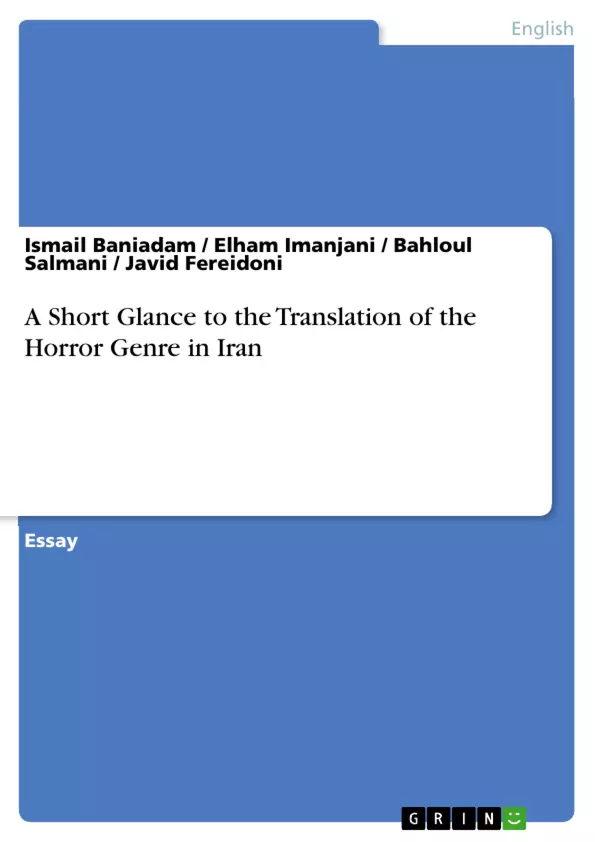The oldest and strongest human emotion is fear. It is embedded in people since time began. It was fear that initiated the establishment of faith and religion. According to Castle in an instance horror is an emotion, extreme and shocking and while we might abhor and have aversion to horror, we are also attracted to it. We want read about horrors and some of us want to write. But horror genre in natural or supernatural form should not be at odd with the basic cultural and religious beliefs, as in this case it leads young adults to the excessive imagination and separate them from fact. As it is said in south news concept used in this genre causes the defamilarization and use of strange and unusual interpretations and phrase will lead Persian youth in the unreal world and it is because of cultural differences between Iranian culture and European culture. Then some translators say that it should be omitted from young adults' literature. On the other hand some others are disagreeing with omission of this genre. Then in this paper, the researcher analysis the advantages and disadvantages of this genre based on translators opinions and some examples from different books to see whether it should be omitted or presented.
Inhaltsverzeichnis (Table of Contents)
- Introduction
- Review of Literature
- Methodology
- Results and Discussions
- Conclusion
- References
Zielsetzung und Themenschwerpunkte (Objectives and Key Themes)
This paper examines the translation of horror genre literature in Iran, analyzing the advantages and disadvantages of this genre for young adults. The paper investigates the cultural implications of translating horror literature from European cultures to Iranian culture, considering the potential impact on young adults' imaginations and perceptions of reality.
- Cultural Differences in Horror Literature
- The Impact of Horror on Young Adults
- Translators' Opinions on the Inclusion or Exclusion of Horror Literature
- The Evolution of the Horror Genre
- Ethical and Moral Considerations in Horror
Zusammenfassung der Kapitel (Chapter Summaries)
- Introduction: This chapter provides an overview of the horror genre and its history, discussing the psychological and social aspects of fear and its connection to horror literature. It also highlights the unique challenges of translating horror literature across cultures.
- Review of Literature: This chapter examines existing research and scholarly perspectives on the horror genre, exploring various theories about its origins, purpose, and impact. It delves into the cultural contexts of horror literature and its potential influence on audiences.
- Methodology: This chapter outlines the research methodology used to investigate the advantages and disadvantages of translating horror genre literature in Iran. It describes the data collection methods, including translators' opinions and examples from specific horror books.
- Results and Discussions: This chapter presents and analyzes the findings from the research, discussing the advantages and disadvantages of translating horror genre literature for young adults in Iran. It also explores the cultural considerations involved in translating this genre.
Schlüsselwörter (Keywords)
The primary keywords and focus topics of the text include fear, horror genre, young adults, literature, culture, translation, cultural differences, ethical considerations, and the impact of horror on imagination and perception of reality.
- Quote paper
- Ismail Baniadam (Author), Elham Imanjani (Author), Bahloul Salmani (Author), Javid Fereidoni (Author), 2016, A Short Glance to the Translation of the Horror Genre in Iran, Munich, GRIN Verlag, https://www.grin.com/document/446153



